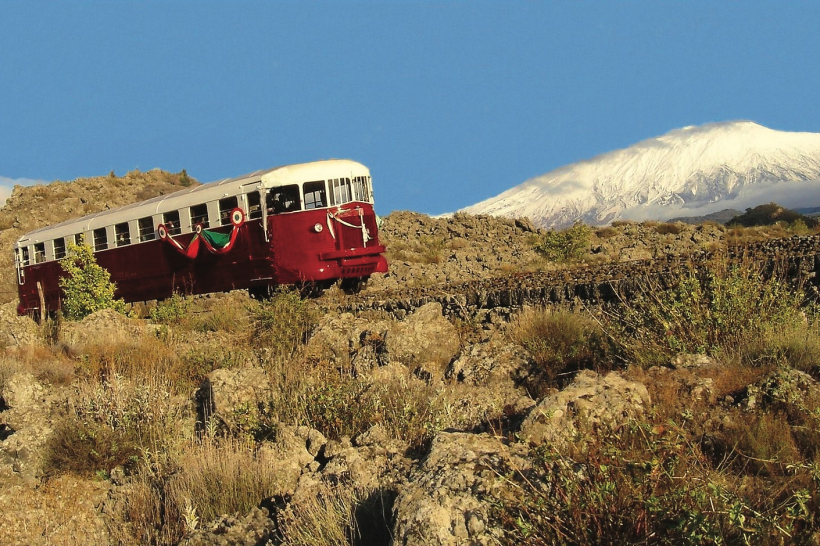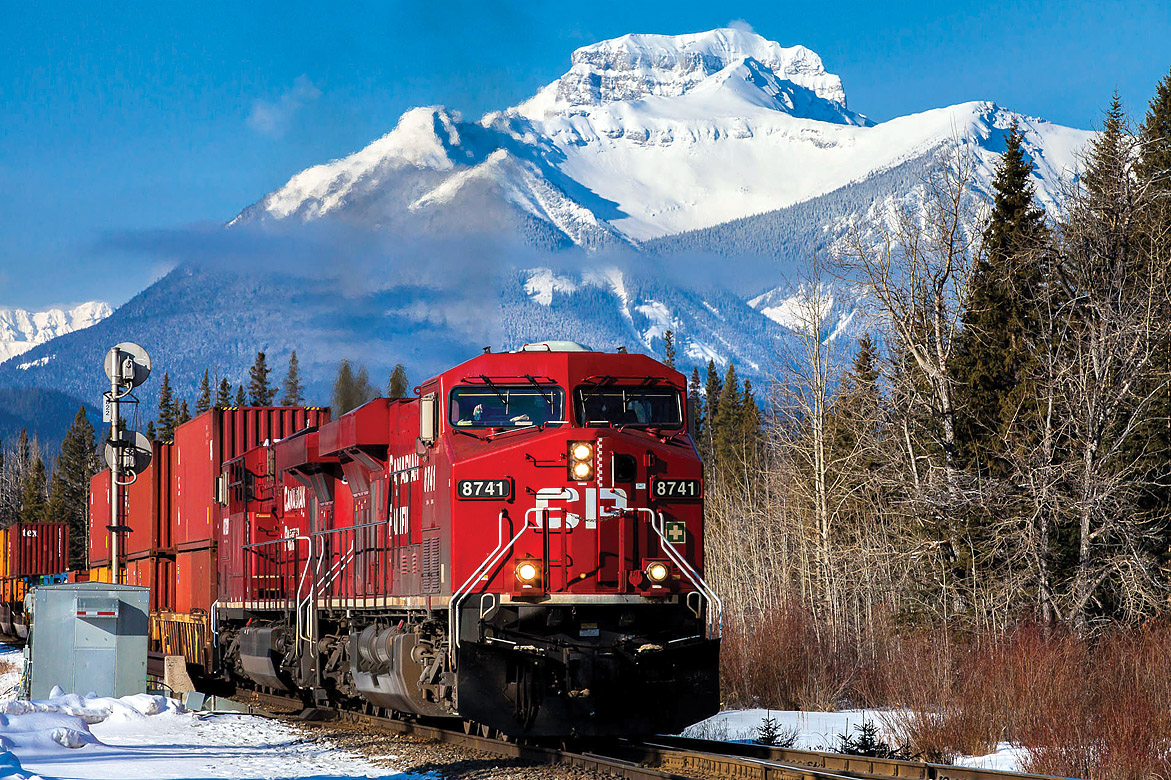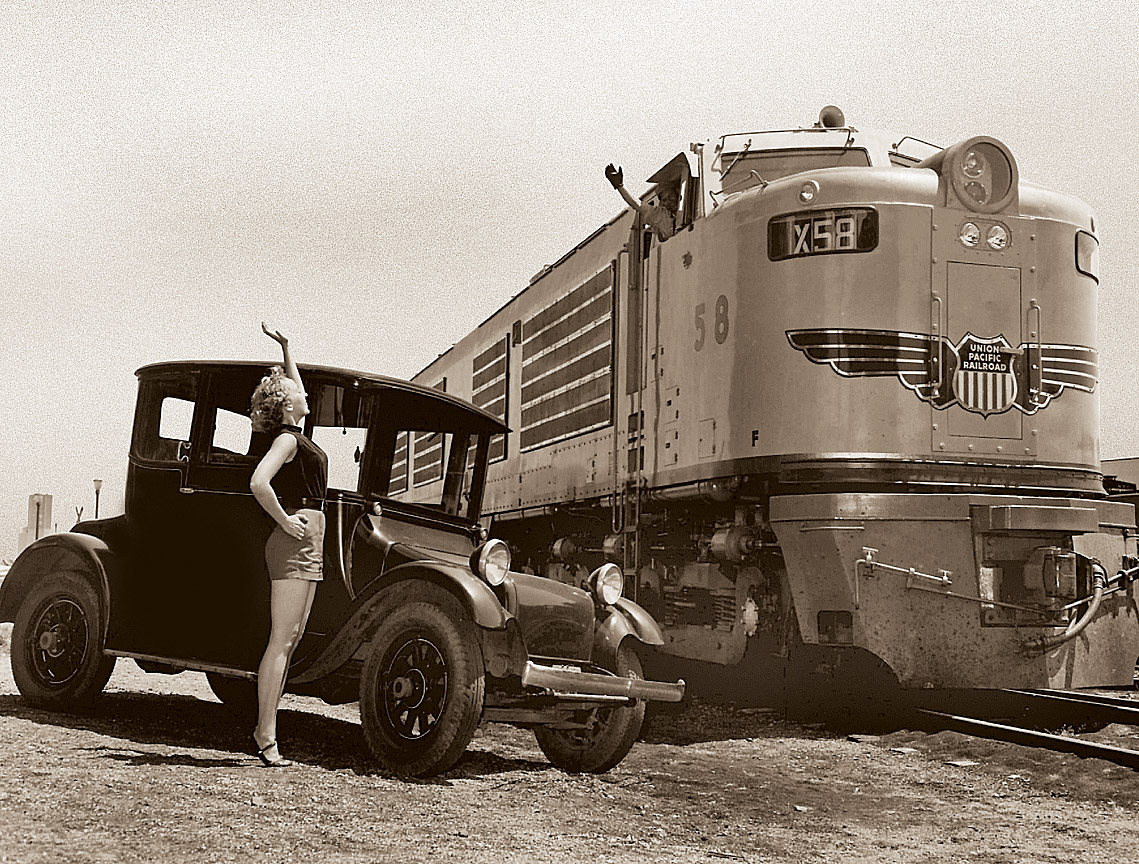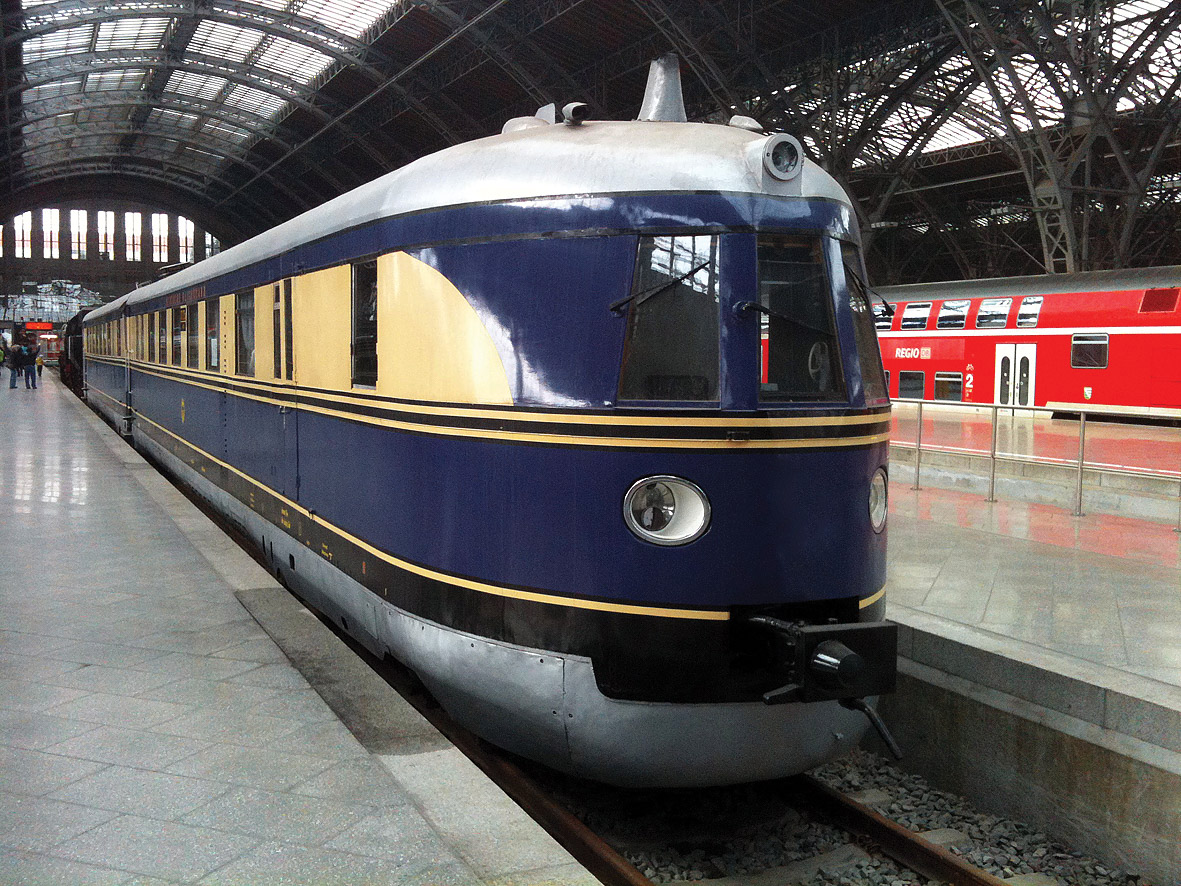
A narrow-gauge diesel locomotive of the Italian line Ferrovia Circumetnea on the route around Mount Etna
History of railways
January 29, 2021

A narrow-gauge diesel locomotive of the Italian line Ferrovia Circumetnea on the route around Mount Etna
Cars, buses, lorries – the new competitors
Initially, diesel engines did not pose a real risk to rail transport. However, the situation changed dynamically. World War I entailed fast progress of technology in the design and manufacture of motor vehicles. This was connected with an assembly line and a cheap engine being introduced in the 1920s by Henry Ford, which made cars, buses and lorries dangerous competitors for trains, especially in developed countries.
The Great Depression and the beginning of the end
In 1929, the world was in a great economic depression. The deficiency of funds gave rise to demand for cheap things, and it is no secret that diesel-powered vehicles were much more efficient and cheaper than steam-powered vehicles. However, rail transport fought to survive. New technologies were adapted, and bigger, faster and more efficient steam locomotives were built. This was the most visible in the United States where the biggest steam locomotives were made accommodating the new trends, that is, diesel and electric locomotives.
Increased technical efficiency of locomotives had a positive effect on the performance to operating cost ratio, and at the same time made it possible to develop higher speed. The use of both electric and diesel power also contributed to reduced environmental pollution and minimised the risk of starting a fire during the journey. These were the benefits that led to withdrawing steam locomotives from regular use.

Diesel locomotive ES44C4 No. 8741 pulling a freight train owned by Canadian Pacific
New drive – diesel engine
From the invention of a diesel engine by Nikolaus Otto in 1876, and in particular the reciprocating engine model invented by Rudolf Diesel in 1892, engineers made attempts to adapt the new structure as locomotive drive. The new drive had numerous advantageous applications for the railway industry which could solve some problems with steam and electric traction. Diesel locomotives, similar to electric ones, had a great advantage over steam locomotives since the boiler did not require heating some dozen or so hours before the run to start the vehicle. Locomotives with a diesel engine were ready for operation at all times. What is more, no fuel was wasted during stopovers, contrary to steam locomotives which required adequate steam pressure and boiler temperature to be maintained continuously. Diesel locomotives have a certain advantage even over electric locomotives: they do not require costly infrastructure to be erected (traction network, substations, etc.). Thanks to the stock of fuel in the locomotive’s fuel tank energy does not need to be supplied continuously like in electric locomotives. This is a huge benefit, in particular for lines with lower traffic intensity, mostly suburban lines, on which electrification or operation of steam locomotives would be unprofitable.
A prototype of luxury torpedo trains in Poland
In Poland the capacity of diesel traction vehicles could only be noticed after 1918, that is, after the country regained its independence. The rolling stock taken over from the previous occupants was incorporated into the assets of the emerging Polish State Railways (Polish abbr.: PKP). The pool of vehicles also included one railcar (self-propelled) and PKP saw that it performed better than steam traction. Actually, that railcar was the precursor of luxury torpedo trains (Luxtorpeda), since its advantages predestined the later order of a railcar from Austria and the buying of plans which enabled the Polish factory Fablok of Chrzanów to build the famous vehicles.
How to set it in motion?
Old problems of new engines
However, the designers of diesel locomotives had to face a serious problem: how to transfer power from the motor to the axles of the locomotive. The first attempts involved direct transfer, but due to exceptionally unfavourable characteristics of a diesel engine for railway applications the intended purpose was not accomplished. An example of such a type of locomotive is the vehicle manufactured in 1912 by the Sulzer company of Switzerland to the order of the Prussian Railways. It was a locomotive with a 960 HP two-stroke engine. Built for more than 3 years, upon completion it turned out to be unsuitable for use by railways. The reason was nothing else but the direct transfer of power from the motor onto the driving axles. This event considerably decelerated the development of locomotives with diesel engines.

Diesel locomotive of Union Pacific at the station in Fremont, Nebraska, 1953
Eureka!
The drive transfer problem was solved in the United States. Americans were also aware of the huge potential of diesel locomotives but they realised that power cannot be transferred directly to the axles. This was also due to the fact that the engines of high-power locomotives (1,000 HP and more) were too strong for traditional mechanical transmissions of that time. Thus, a non-mechanical solution to this problem was sought. An American company, General Electric, proposed a combination of a diesel engine with a generator to supply direct current electric motors. As illustrated by history, the concept was a great success and later designs of line diesel locomotives were almost exclusively equipped with such a type of transmission, called electric transmission.
Transmission – electric or hydraulic?
Attempts were also made to use hydraulic transmission in rail vehicles. This was the type of drive transmission used in the aforementioned Luxtorpedas. A drawback of this solution is low efficiency. Nevertheless, as the transmission lacks rigid connections and can be overloaded to a large extent without overloading the motor, this type of equipment has been in use to date. The first country to put diesel locomotives with electric transmission into line service was the Soviet Union. In 1924 a famous scholar, Professor Yakov Modestovich Gakkel, designed a diesel locomotive with power of approximately 1,000 HP, to the order of the Soviet Railway. Soon, the machine was put into line operation and demonstrated its high efficiency and reliability. The Soviet Union immediately noticed the advantages of a diesel locomotive over steam locomotives, in particular as regards its readiness for travel, and in less than 10 years later a serial production of 1,200 HP diesel locomotives was launched.

The first express diesel train, the "Flying Hamburger" ran from 1933 between Berlin and Hamburg
The Great Depression and a huge demand for diesel-powered vehicles
As a result of the difficult global economic situation after World War I and the Great Depression, railway administrators in nearly all countries looked eagerly for saving options. This contributed to an increase in the popularity of diesel rail vehicles since their operation was much cheaper than the operation of steam locomotives and did not require costly infrastructure characteristic of electric locomotives. Their significance, as the relatively cheapest alternative, grew rapidly. This was mostly the case of self-propelled railcars with a diesel engine because, in addition to the obvious financial benefits of their use, they also proved more profitable on routes with lower traffic intensity. The most famous railcars that are worth mentioning included the SVT 877 called the “Flying Hamburger” (“Fliegender Hamburger” in German) which could travel at a speed of 100 mph (160 km/h). It ran between Berlin and Hamburg and travelled 178 miles (286 km) in 2 hours and 18 minutes only. At that time, it was the fastest regularly going train in the world. Germany was the precursor of fast connections rendered by railcars and until the beginning of World War II it had a network of “flying” trains which could travel at a speed of 100 mph (160 km/h), running between the major German cities. Apart from the “Hamburger”, there were also lines between Berlin and Cologne (“Fliegender Kölner” in German), Frankfurt (“Fliegender Frankfurter” in German) or Silesia (“Fliegender Schlesier” in German).
The outbreak of World War II inhibited the development of diesel traction vehicles in Europe, but it did not stop their expansion in the USA. By 1956 about 80% of carriages in that country were taken over by locomotives of that type. In the post-war period designs of diesel engines, transmissions and other components making the vehicles even faster, more efficient and more reliable were developed.